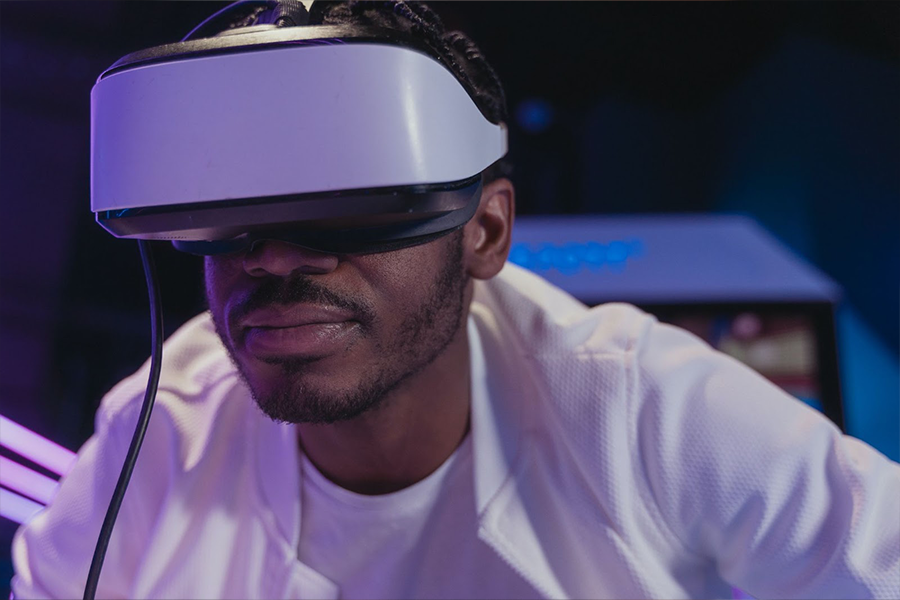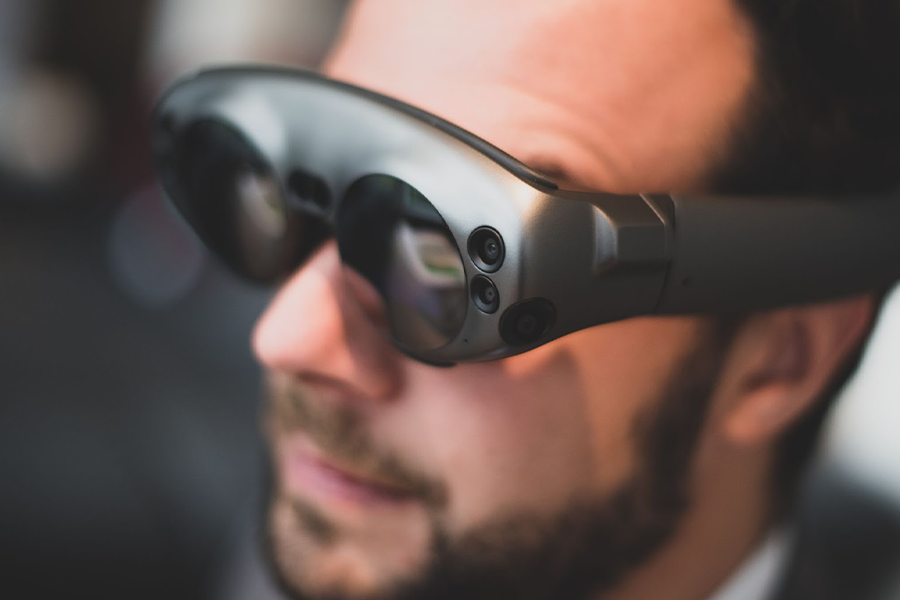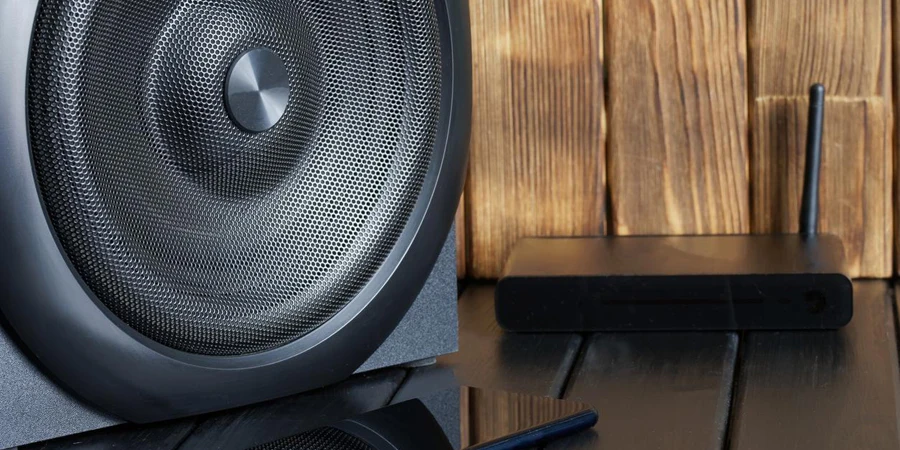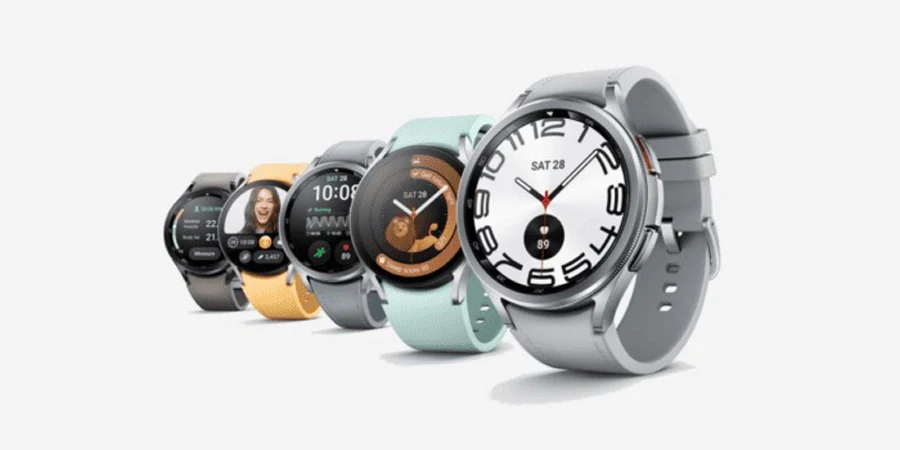Table of Contents
Augmented reality (AR) versus virtual reality (VR)
Which products are right for your business
AR and VR growing industries
How to pick which AR or VR products to sell
Our world doesn’t stand still, not for a second. Augmented and virtual reality has sped things up that much further, forever changing the landscape of industries in entertainment, education, and even healthcare.
This blog looks at the differences between augmented and virtual reality devices, a snapshot of each market, and includes steps to help businesses pick out the perfect gadgets for their customers.
Augmented reality (AR) versus. virtual reality (VR)
The global AR and VR markets are predicted to have explosive growth in the coming years. As soon as 2023, the e-cCommerce market worldwide for both AR and VR will hit just under $100 billion.

What is AR?
Augmented reality (AR) is defined as taking the mundane, real-world we all see and mixing in some imagination, seamlessly blending them. The beauty of using AR is that anyone with a smartphone and some wicked-looking AR glasses can try it.
AR projects virtual images from either a smartphone camera or a video viewer (also called wearable computer-capable glasses) and sensory stimuli, transforming the unimaginable into imaginable.
AR industry statistics
AR is currently one of the most significant sectors in entertainment. The International Data Corporation (IDC) estimates that AR could grow to be a $61 billion industry as soon as 2023. Others think it could be as big as $198 billion. It seems the sky’s the limit!
With the expected number of smartphone users to reach 3.5 billion in 2022, the AR market is looking strong. By 2025, it’s projected that the US will have over 14 million employees in different sectors who will use AR regularly.
What is VR?
Virtual reality (VR) is like a computer game but on steroids.
A VR headset produces an entire world of computer-generated simulations, making it seem like the users entered an alternate dimension.
This alluring stimulation is so powerful that it can easily construct almost anything imaginable for the player using this futuristic-looking headset.
VR industry statistics
The VR consumer global market is already marked at $3.7 billion as of 2021. As the distancing measures are eased, the VR market shows signs of a comeback, with 2021 showing an increase over 2020 by over $1.1 billion.
The biggest market for VR users is in China, making up 36% of global sales, with the United States and Western Europe following close behind. Online shops that carry VR products tend to have conversion rates of over 17%, while the average e-commerce conversion rate hovers around 2%.
Which products are right for your business?
Below, we examine each of the top products in AR headsets and VR devices regarding quality, price, accessibility, and safety.
AR product review – Vuzix Blade Upgraded
The Vuzix Blade Upgraded is perfect for learning about tech and for workers in the field. Specifically for workers who don’t have easy remote access to a job site, these AR glasses allow users to access places too challenging to reach.
With features such as live help, access to site layout drawings, and helpful instruction guides, the Vuzix Blade Upgraded makes any job much more manageable. A new era of learning and work has arrived, and it seems Vuzix Blade Upgraded is leading the charge.
Cost
The Vuzix Blade Upgraded has a price tag of about $800. The interface display is much crisper than older models and, with added voice command features, it’s much easier to use theis AR device.
The Vuzix Blade Upgraded AR glasses have some room to improve when it comes to camera strength. Overall though, this AR device is still an excellent buy for on-the-job sites or classrooms.
Accessibility
When it comes to how accessible AR is, there are many different possibilities for applying this technology. Out of the two, AR seems to be less favored than VR because the technology for VR is more advanced, and users seem to enjoy it more.
Safety
AR can be a dangerous distraction when it’s in the hands of children. Children can become consumed in an altered world or distracted, which can be potentially dangerous.
VR product review – HTC Vive Cosmos Elite
The ultimate VR headset is the HTC Vive Cosmos Elite, which includes high-res room tracking. This headset allows users to have a fully immersive experience with its 2880 x 1700 combined pixel resolution.
The HTC Vive Cosmos Elite is the clear winner for the best VR headset for full-room playability.
The HTC Vive Cosmos Elite takes VR to a whole new level; using a system made for interoperability, and with stellar sound quality, users can create their very own gaming experience.
Cost
The HTC Vive Cosmos Elite costs $850, a reasonable price for a high-end VR headset. This one takes the cake for customers looking for quality at a fair price.
This VR headset provides one of the best, most immersive VR gaming experiences out there while also being quite intuitive to operate.
Accessibility
VR technology seems to be favored by more people and many industries. Although AR has just as many uses, there’s a clear favorite here.
The reason is that VR is way more immersive and engaging than AR, giving users a better, more unforgettable experience.
Safety
As great as VR is, there are some concerns about children. The fear is that VR for kids can be a real danger because it’s extremely easy for them to become engrossed in VR and unaware of the environment around them.
Most tech companies that produce VR headsets set the age requirement at 13+, while others like Sony have said their PlayStation VR is acceptable for those aged 12 and older.
Real-world applications for AR and VR
This section looks at some real-world applications for AR and VR and breaks down how these devices could forever change the world.
AR in entertainment
VR is already regularly used in the entertainment industry; viewers can feel like they’re part of the story.
With 360-degree films, VR headsets are proving to win audiences over. VR could change the way we see movies forever.
Who’s to say the future won’t include AR football games?
VR in real estate
Imagine touring a listed house without leaving your current home.
These self-guided tours could soon be a reality, with more and more real estate agencies using VR to help sell houses and showcase those properties to as many buyers as possible.
AR and VR growing industries
This section examines which industries embrace AR or VR technologies and what these changes could mean for the future.
VR in sports, entertainment, and video games
In the world of entertainment, be it sports, video games, or movies, VR is revolutionizing how we experience an event. Movies are now using a 360-degree experience partnered with VR headsets, so someone watching can feel like they’re part of the story that’s unfolding.
Whether it’s the NBA in the USA or soccer in England, VR headsets can take users there, as if they were there in person.
Then there are video games. Rather than seeing everything through a screen, a VR headset lets users be transported right into that new world and be part of the game.
VR healthcare
VR headsets will heavily impact the healthcare industry; medical professionals will soon practice with virtual models identical to their patients. When it comes to patient education, robotic surgery, pain management and physical therapy, and psychological therapy, VR will have the power to transform the healthcare industry.
AR in education
AR technology will transform how students learn as we know it. Students could see the solar system from space or even musical notes float through the air as they play their instruments.
Students of all ages learn to enjoy a much more enriching and alluring experience while having fun playing some AR games.
AR in city planning
AR tech and city planning could be a match made in heaven. City planners can see where and what they’re planning to build.
Imagine a deep look into surrounding areas of a new building, identifying problems ahead of time, and fully examining whether a project is worthwhile—leaving cities everywhere with more money in their pockets and more time for viable plans.
How to pick which AR or VR products to sell
Here are the different steps and points to consider whether to invest in selling AR or VR products on your e-commerce store.

Research the technology
It’s essential to do research as an online store owner and come to one’s own conclusions. Understanding the pros and cons of each technology will allow businesses to pick products that will delight and thrill their customer base.
Pick AR or VR
Now it’s time to actually choose one, AR or VR. Who the customers are, what they like, what kind of work they do, or their demographics are all important things to factor in when making a decision.
Say a business targets, healthcare professionals. The products they pick would differ from those of someone who targets teen video games.
Make some inquiries
Now it’s time to do some outreach to the companies researched and begin negotiating a deal to work together. It’s important to write clearly and give as many details as possible to send out these inquiries.
Start small
Businesses should find a suitable vendor and start small when making their first few orders. If customers don’t want what is offered, sellers can make the necessary adjustments. Most vendors on Alibaba.com offer sample products, so businesses can make use of this to check out a product before ordering 100.
Time for fFeedback
Businesses can ask customers for feedback on what they liked and didn’t like about their products. This information will be invaluable as they move forward with AR or VR products, setting up for future success.
Looking into the future
The world is full of wonder, and today more than ever, it seems magic is real.
And this magic is becoming part of everyday life. With VR and AR entering education, healthcare, and city planning spaces, it’s no longer just a video game or entertainment source.
AR and VR are here to stay and grow.








